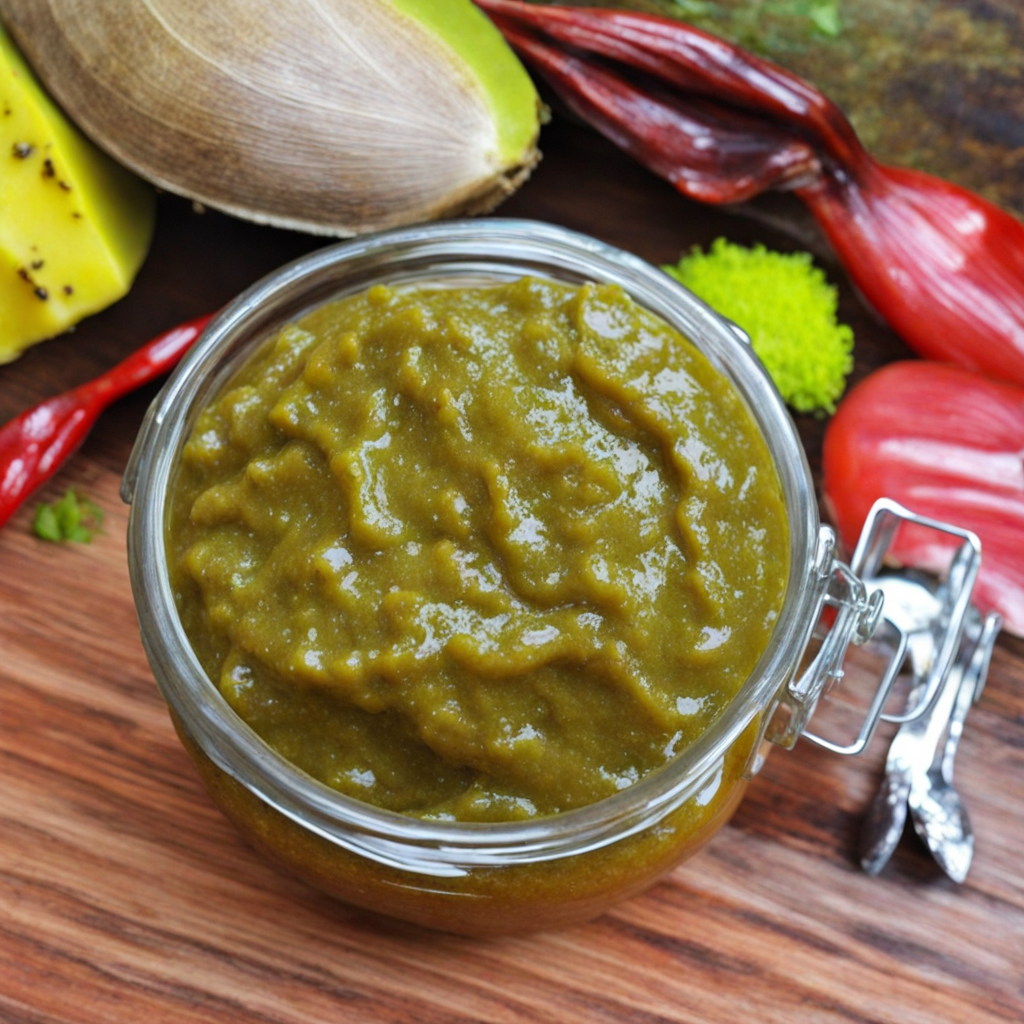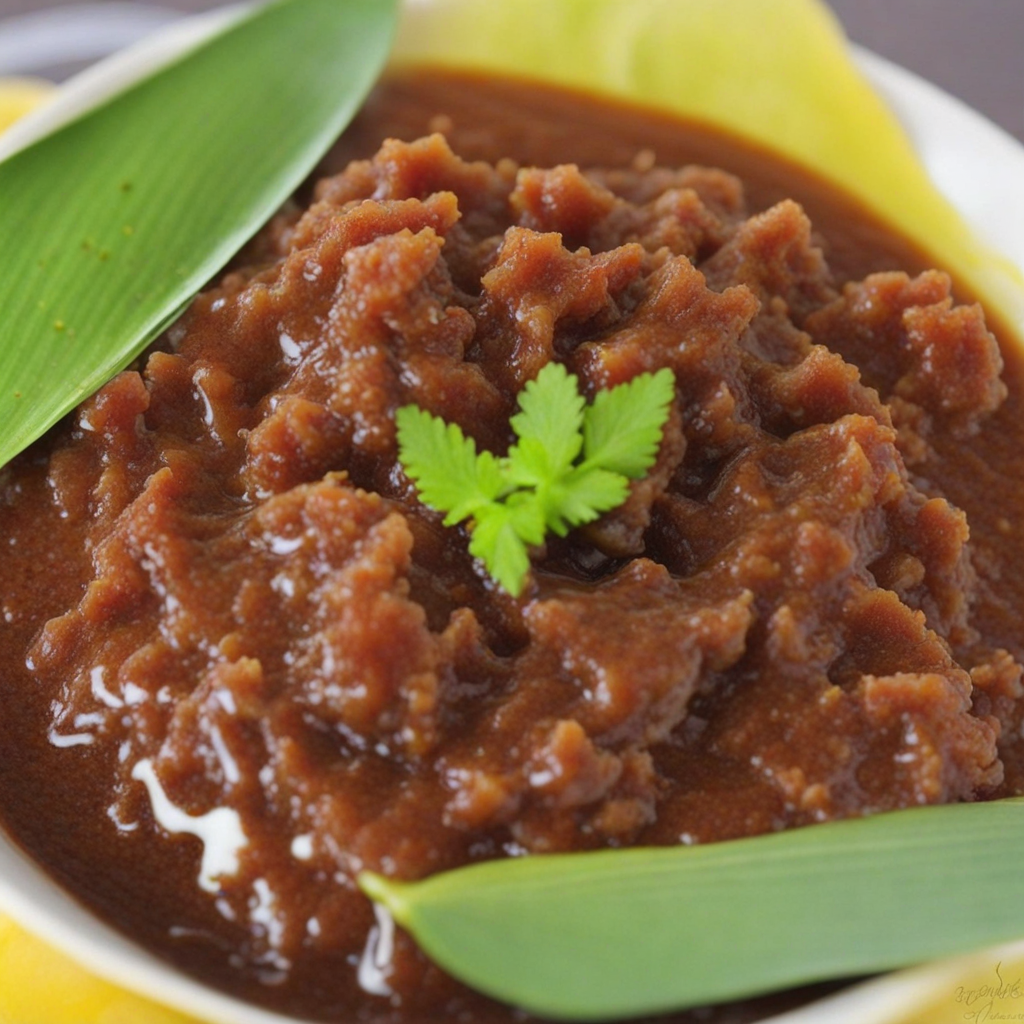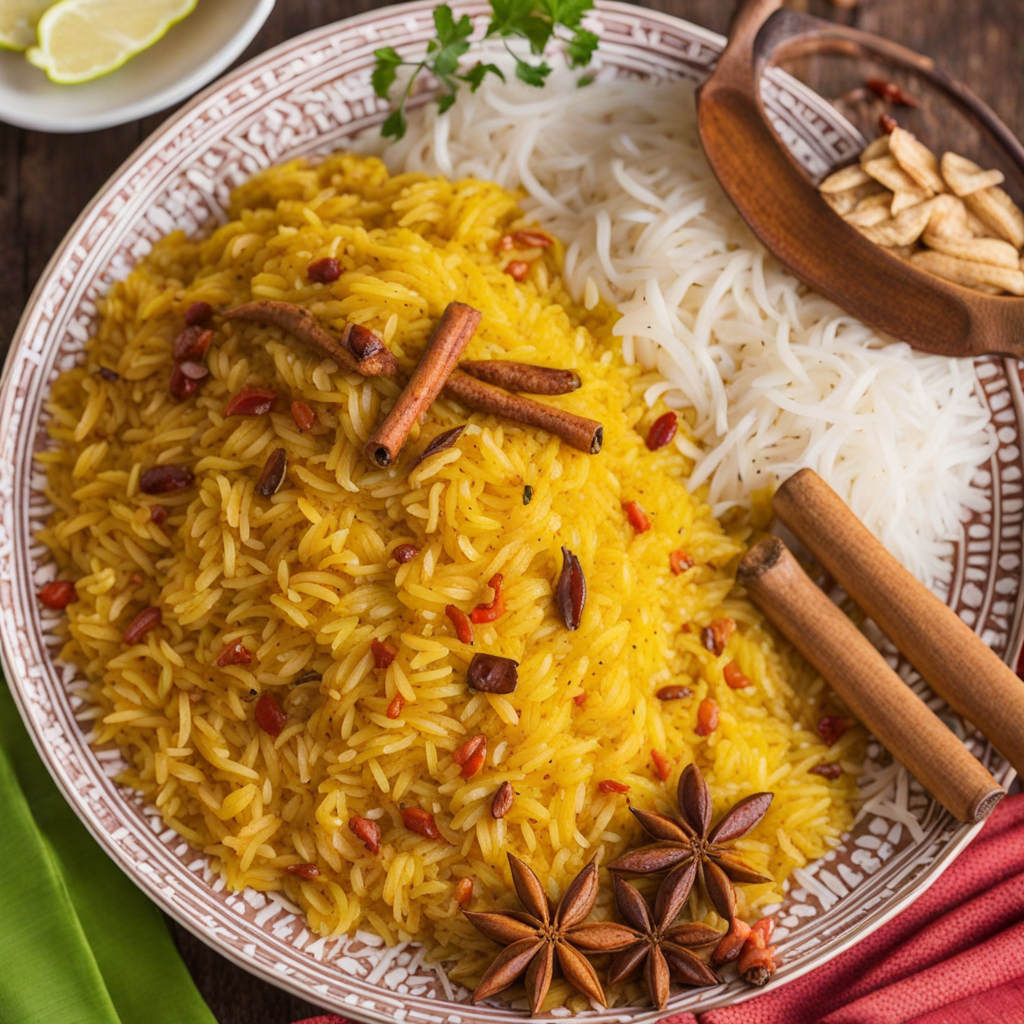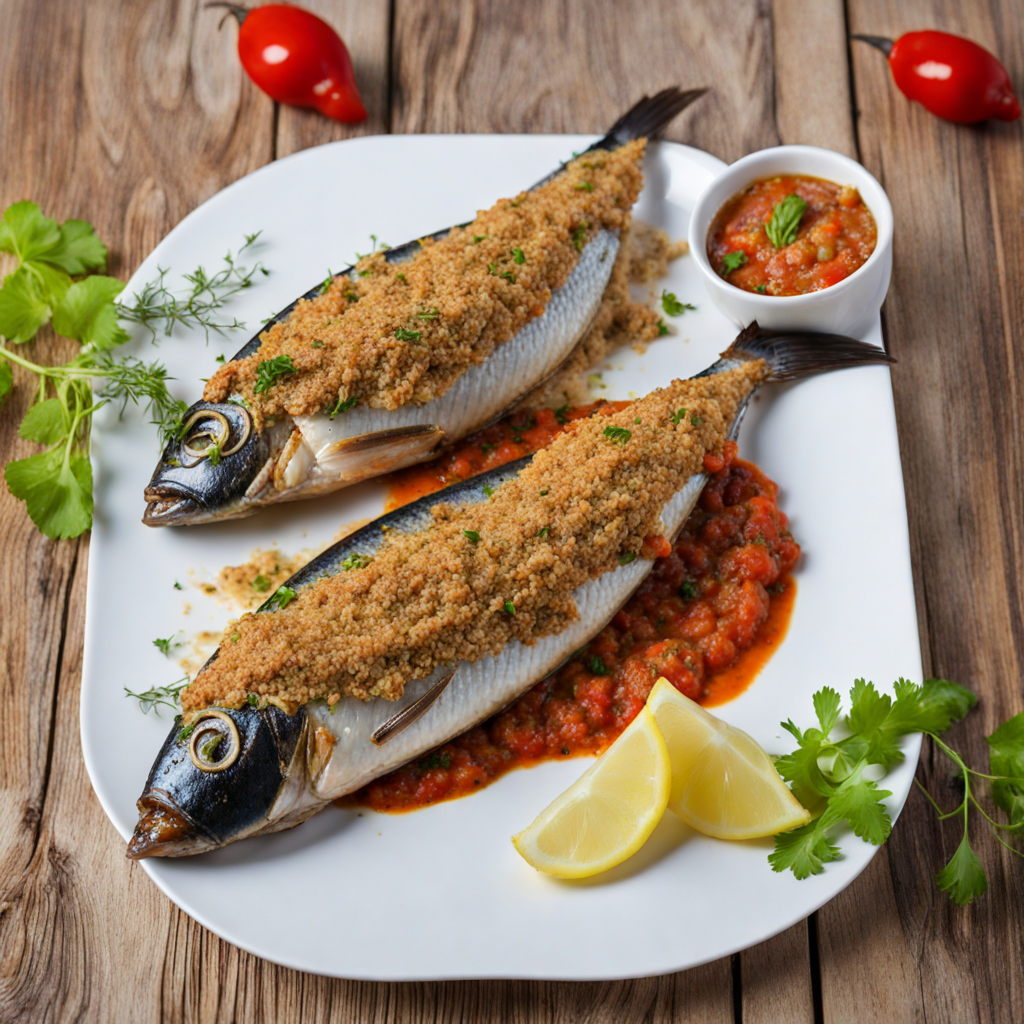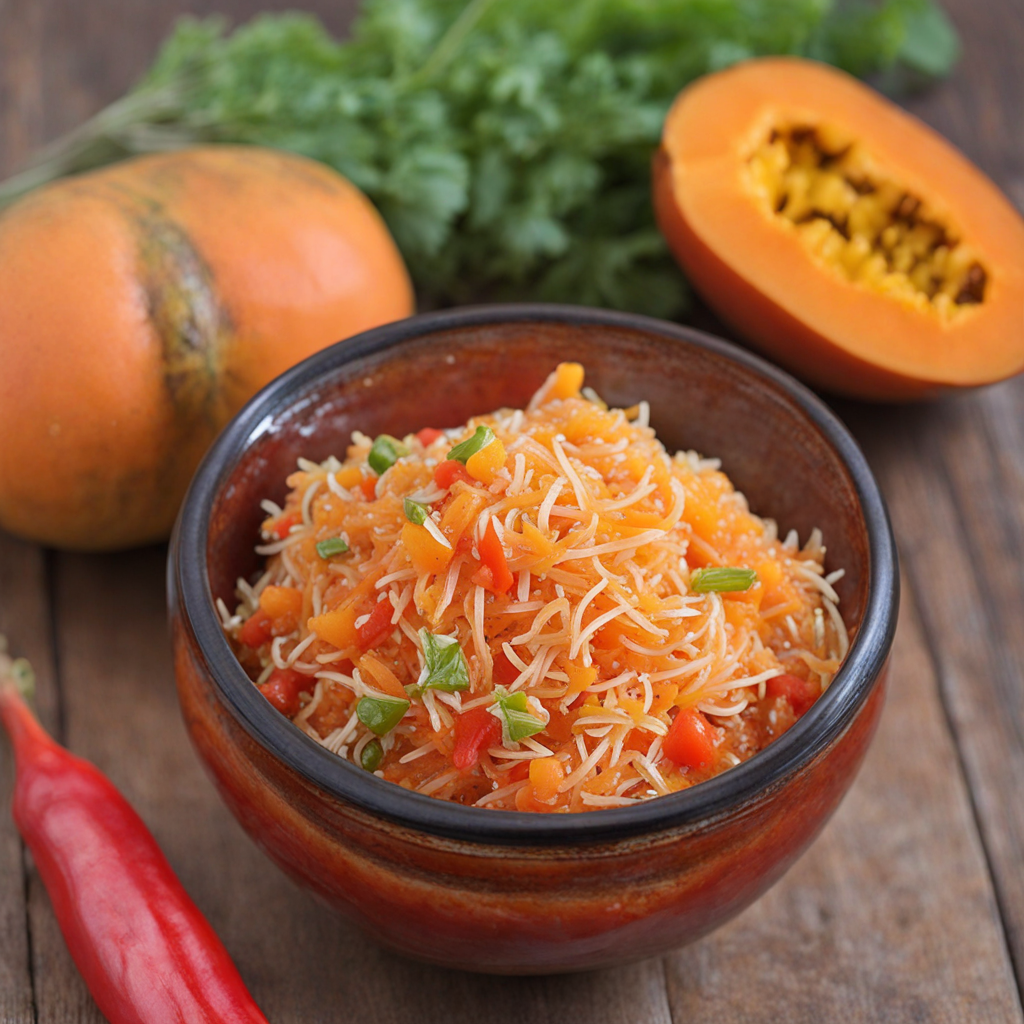Shark Chutney
Shark Chutney is a unique and flavorful dish from the beautiful archipelago of Seychelles, where the fusion of various culinary influences creates a delightful gastronomic experience. This dish typically features tender pieces of shark meat, which is marinated and then cooked to perfection, allowing the natural flavors of the fish to shine through. The preparation often includes a blend of spices like turmeric and ginger, along with fresh herbs such as coriander and chili, giving the chutney a vibrant and aromatic profile that tantalizes the palate. The chutney is characterized by its zesty and tangy notes, often enhanced by the addition of lime or lemon juice, which brightens the dish and balances the richness of the shark meat. This contrast between the savory depth of the fish and the sharpness of the citrus creates a harmonious flavor that is both refreshing and robust. The texture of the chutney is also noteworthy, as the shark is typically flaked and combined with chopped vegetables like onions and tomatoes, providing a delightful crunch that complements the tender fish. Served as a condiment or side dish, Shark Chutney is often enjoyed alongside traditional Seychellois rice or grilled vegetables, making it a versatile addition to any meal. Its bold and vibrant flavors encapsulate the essence of Seychellois cuisine, inviting adventurous eaters to explore the tastes of the Indian Ocean. For those looking to expand their culinary horizons, Shark Chutney offers a daring yet delicious experience that captures the spirit of island life.
How It Became This Dish
The Culinary Journey of Chatini Reken: A Seychelles Delicacy Origins and Ingredients Chatini Reken, a vibrant and flavorful condiment, is a quintessential dish from the Seychelles, an archipelago in the Indian Ocean known for its rich biodiversity and multicultural heritage. The term "chatini" refers to a type of chutney or condiment in Seychellois cuisine, while "reken" translates to "cucumber" in Creole, highlighting the primary ingredient of this dish. This refreshing preparation celebrates the natural bounty of the islands, where fresh fruits and vegetables thrive in the tropical climate. The origins of Chatini Reken can be traced back to the early settlement of the Seychelles in the 18th century, when French colonists and enslaved African laborers mingled with the indigenous Malagasy people. This blend of cultures established a unique culinary tradition that is still evident in Seychellois cuisine today. The use of cucumbers, onions, and tomatoes reflects the diverse agricultural practices and the availability of local produce. Cultural Significance Chatini Reken is more than just a condiment; it is a symbol of the Seychellois identity, encapsulating the islands' history and culture. The dish embodies the spirit of sharing and hospitality that is prevalent in Seychellois culture. Traditionally served alongside staple dishes like fish curry, grilled meats, or rice, it enhances the dining experience, elevating simple meals with its zesty and refreshing flavor profile. The preparation of Chatini Reken often occurs during family gatherings, celebrations, and community feasts, making it a communal dish. Its vibrant colors and bold flavors reflect the joy and vibrancy of Seychellois life. The act of preparing Chatini Reken can be a collective endeavor, where family members come together to chop vegetables, mix spices, and share stories, reinforcing the bonds of kinship and community. Ingredients and Preparation The basic recipe for Chatini Reken is straightforward, consisting of finely chopped cucumbers, onions, and tomatoes, often with the addition of chili peppers for a spicy kick. Fresh herbs, such as coriander or mint, and a squeeze of lime or lemon juice lend brightness to the dish. The combination of these ingredients creates a balance of textures and flavors — the crispness of cucumbers, the sweetness of onions, and the acidity of tomatoes. Preparation methods may vary from household to household, reflecting personal preferences and regional variations. Some families may add grated coconut, a nod to the coconut palms that are abundant in the Seychelles, while others might include different types of peppers or even fruits like mango or pineapple for a unique twist. The versatility of Chatini Reken allows it to adapt to seasonal ingredients and individual tastes, ensuring its continued relevance in contemporary Seychellois cuisine. Development Over Time As the Seychelles evolved through colonial influences, global trade, and tourism, so too did its culinary landscape. The introduction of new ingredients and cooking methods transformed traditional dishes, including Chatini Reken. The arrival of Indian and Asian immigrants, for example, brought spices and flavors that have been integrated into the local cuisine, enriching the taste of Chatini Reken. In recent years, the rise of culinary tourism in the Seychelles has led to a renewed interest in traditional dishes, including Chatini Reken. Chefs and home cooks alike are rediscovering the importance of preserving local culinary heritage while also experimenting with innovative presentations and pairings. Restaurants around the islands now feature Chatini Reken as a signature side dish, often served alongside gourmet interpretations of classic Seychellois fare. Despite these modern adaptations, the essence of Chatini Reken remains unchanged. It continues to be a beloved accompaniment, reflecting the unique nature of Seychellois culture and the islands' historical tapestry. In a world increasingly influenced by globalization, the preservation of traditional recipes like Chatini Reken serves as a reminder of the importance of culinary heritage and the stories that food can tell. Modern Interpretations and Global Influence Chatini Reken's adaptability has allowed it to transcend its local origins, gaining popularity among food enthusiasts and chefs around the world. With the rise of global fusion cuisines, variations of the dish can now be found in restaurants that blend Seychellois flavors with influences from other culinary traditions. These interpretations often highlight the dish's versatility, showcasing it as a refreshing side to seafood, grilled meats, or even as a topping for tacos. Social media platforms and food blogs have also played a significant role in promoting Chatini Reken beyond the shores of Seychelles. Home cooks and culinary explorers share their interpretations, encouraging others to experiment with local ingredients and flavors. This digital exchange fosters a greater appreciation for the cultural significance of such dishes and encourages the preservation of traditional culinary practices. Conclusion: A Taste of Home In summary, Chatini Reken is a vibrant and essential part of Seychellois cuisine, rooted in the islands' complex history and cultural heritage. Its evolution over time reflects the dynamic nature of food and the ways in which it can bring people together, celebrate diversity, and adapt to changing contexts. Whether enjoyed at a family gathering or showcased in a fine dining setting, Chatini Reken continues to embody the spirit of the Seychelles — a celebration of flavor, community, and tradition. As the world becomes increasingly interconnected, the importance of preserving and sharing local culinary traditions becomes paramount. Chatini Reken serves not only as a delicious condiment but also as a testament to the resilience of culture, the joy of sharing meals, and the stories that foods tell across generations. Through each bite, one can savor the essence of Seychelles — a place where history, culture, and culinary artistry converge.
You may like
Discover local flavors from Seychelles


